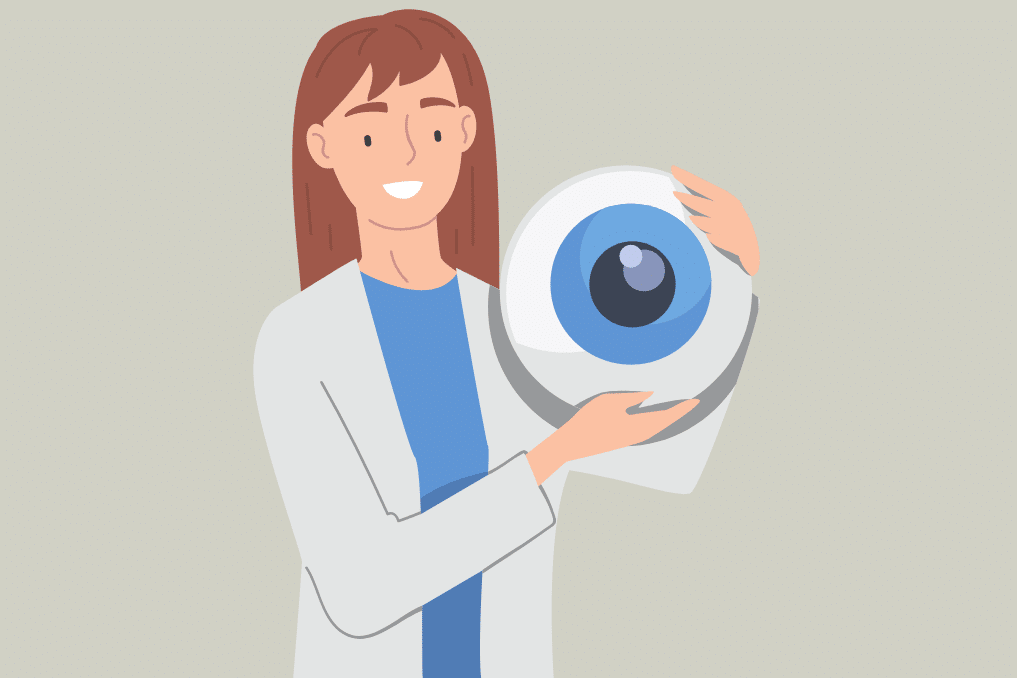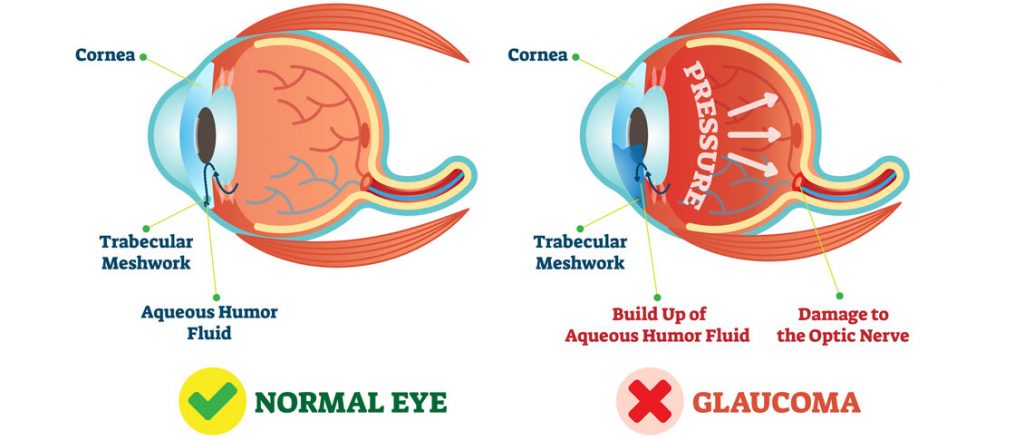
January is Glaucoma Awareness Month. Now is the time to spread awareness of Glaucoma and how it can affect your life.
Glaucoma is the leading cause of avoidable blindness in Australia, affecting over 300,000 people. However, 50 percent of Australians living with the disease remain undiagnosed. While 9 out of 10 Australians regard sight as their most valued sense, over 8 million Australians still do not have regular eye tests.
WHAT IS GLAUCOMA?
It is usually caused by an increase in intraocular pressure (IOP) which can cause optic nerve damage. The level of elevated eye pressure which causes progressive damage to the optic nerve varies between people.
The eye is constantly producing a clear liquid which nourishes the eye and holds the eye in shape. It is then drained out through an area called the anterior chamber angle or drainage angle. If there is damage to the drainage angle, it can cause high IOP in the eye.
This increased pressure begins to damage the optic nerve which lies at the back of the eye. Damage to the cells of the optic nerve results in irreversible damage to your eyesight.
TYPES OF GLAUCOMA
There are two types: Open-Angle and Acute Angle-Closure.
Open-Angle is the most common type of the disease. The drainage angle formed by the cornea and iris remains open, but the trabecular meshwork is partially blocked. This causes pressure in the eyes to gradually increase.
The severe type is Acute Angle-Closure, which can cause severe eye pain. The following symptoms include: nausea and vomiting, headaches, watery eyes, sudden onset of blurred vision or seeing halos around lights. This is a medical emergency and immediate treatment is required by your eye doctor.
WHAT ARE THE FIRST SIGNS TO LOOK FOR?
People with glaucoma tend to suffer from higher than average eye pressure, blurred vision and loss of peripheral vision or side vision (not necessarily severe cases). An eye test will determine these symptoms and regular check-ups (every 3-6 months) are recommended due to the eye condition.
Annie Gibbins, Glaucoma Australia CEO, said “We want to dismiss the myth that glaucoma only affects the elderly, which is why we are launching this new risk awareness campaign during World Glaucoma Week. We want to encourage anyone at risk of developing the disease to get their eyes tested, especially if you have a family history of the disease, as you are 10 times more likely to develop it if you have a direct relative with it.” If you have a family history of glaucoma, are of Asian or African descent, or are over the age of 50, you are at a higher risk of developing the eye disease. Other risk factors include diabetes, myopia (near-sightedness), prolonged cortisone use, migraines, a previous eye injury or eye operation, and a history of high or low blood pressure.
ARE YOU AT RISK?
Everyone over the age of 50 should visit an optometrist every year for a regular eye exam. The risk of is higher if you have a family history of glaucoma, of Asian or African descent, or suffer from any of the above risk factors, you should have your eyes checked annually from the age of 40.
Glaucoma has been nicknamed ‘the silent thief of sight’, because there are often no early signs or symptoms. In reality, before you notice anything unusual with your sight, vision may have already been permanently lost.
WHAT IS INVOLVED IN GLAUCOMA TESTING?
During the eye test, the optometrist will examine the following:
– Eye pressure
– Shape and colour of your optic nerve (Dilation drops required)
– Complete field of vision (Visual Fields Test)
– The angle where your iris meets your cornea and the thickness of your cornea
Your optometrist may also recommend some eye drops to assist with eye discomfort and will be required after you have been diagnosed with the disease. It is important to protect your eyes and if you have any of the symptoms mentioned in this post it is suggested to book an appointment to avoid permanent vision loss.
Our priority is saving people’s sight. An eye test with an expert optometrist can detect glaucoma before you know there might be a problem. While vision loss cannot be restored, early diagnosis and treatment can delay or halt the progression of disease.
Book an eye test to determine if you have symptoms or for your regular glaucoma eye exam.
WHAT IS USUALLY THE FIRST SIGN OF GLAUCOMA?
Loss of peripheral or side vision: This is usually the first sign of glaucoma. Seeing halos around lights: If you see rainbow-colored circles around lights or are unusually sensitive to light, it could be a sign of glaucoma. Vision loss, Especially if it happens suddenly.
CAN GLAUCOMA BE STOPPED?
Timely Diagnosis and Appropriate Treatment are Key to Glaucoma Prevention. While there are no known ways of preventing glaucoma, blindness or significant vision loss from glaucoma can be prevented if the disease is recognized in the early stages.
WHAT CAUSES GLAUCOMA?
Glaucoma is the result of damage to the optic nerve. As this nerve gradually deteriorates, blind spots develop in your visual field. For reasons that doctors don't fully understand, this nerve damage is usually related to increased pressure in the eye

